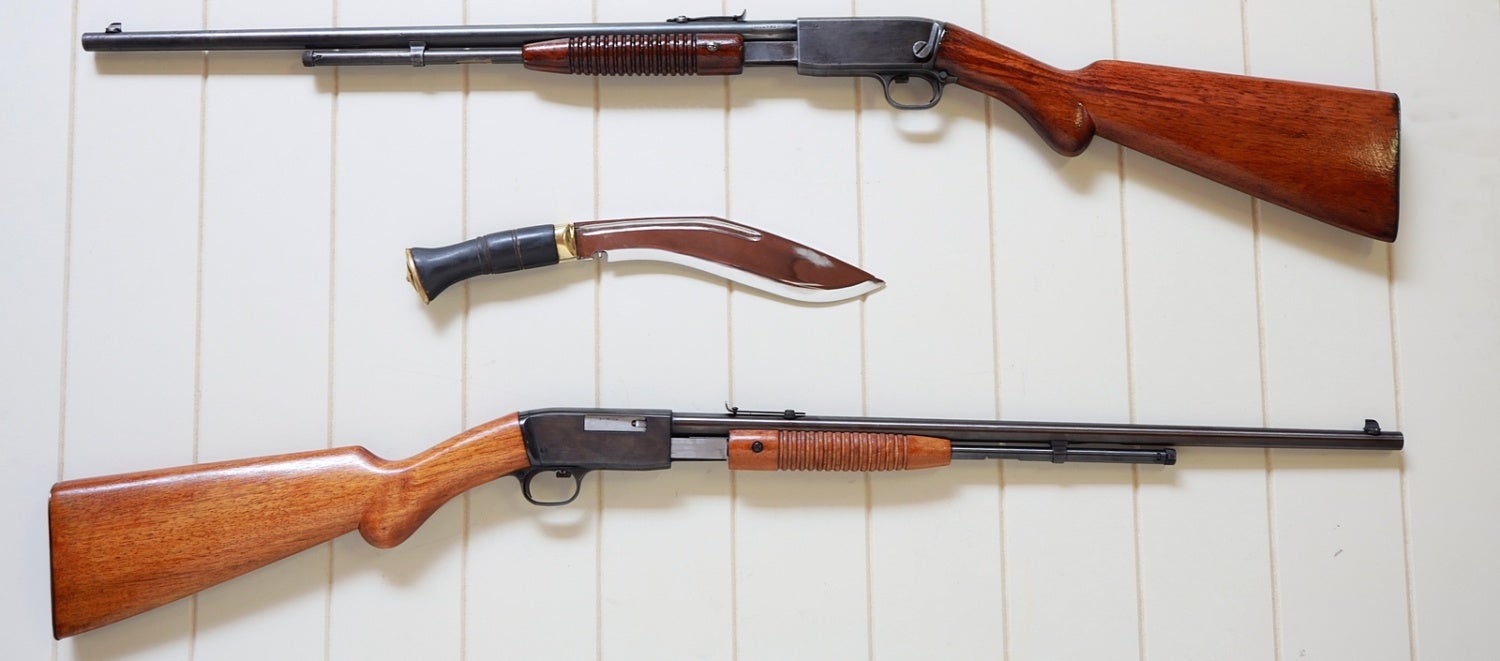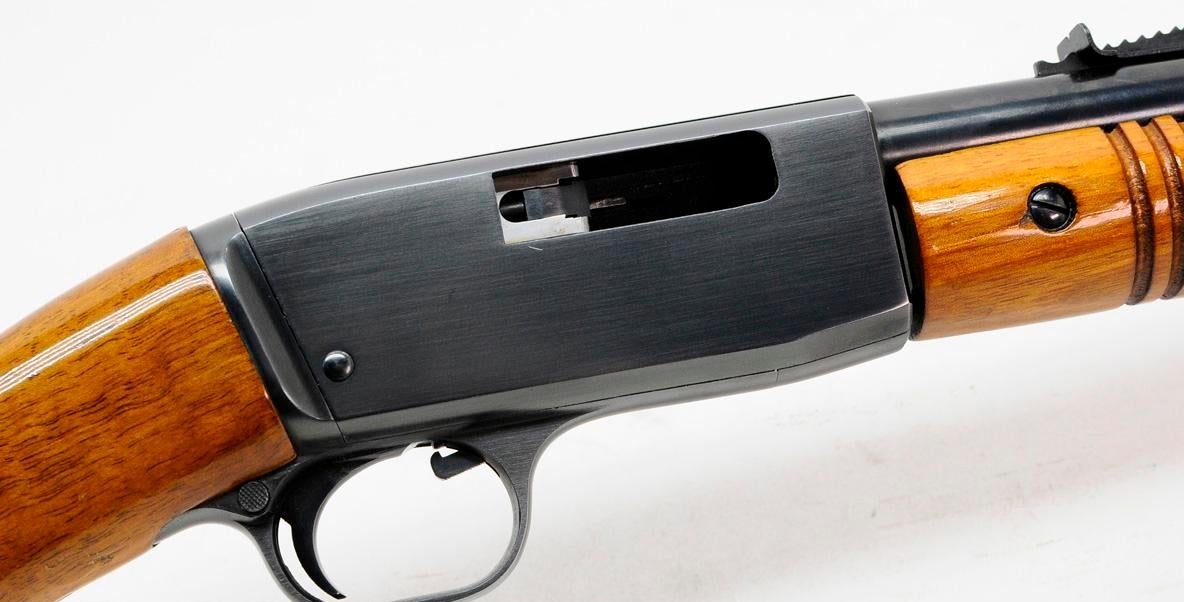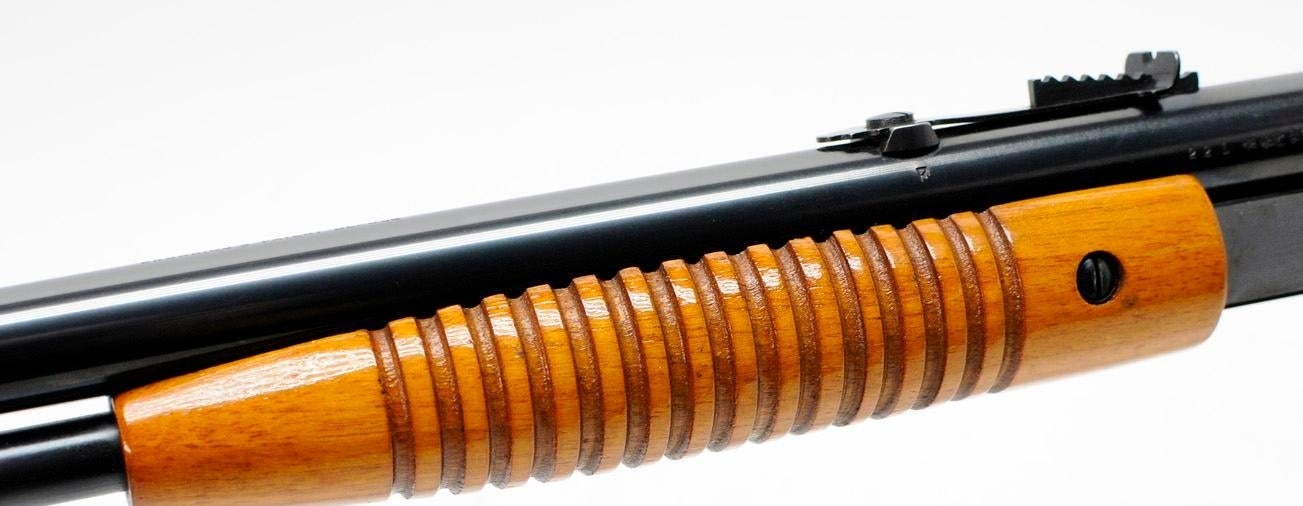Welcome back to another edition of The Rimfire Report! This ongoing series is all about the rimfire firearm world. Today I want to talk about slide action or pump action 22LR rifles. They’re absolutely fun, and a great way to introduce new shooters to the sport using a manually operated firearm. While there are a few notable examples throughout the history of pump-action 22LR rifles, they aren’t nearly as popular as lever-action 22LR rifles. Born from the mind of John Moses Browning himself, the FN Trombone is one such example that doesn’t get nearly enough attention. Today we’ll discuss the history of the FN Trombone and talk about some of its features, as well as where you might find one today if you’re an avid historical rifle collector.
More Rimfire Report @ TFB:
- The Rimfire Report: The Vudoo Target .22LR 1911 Pistol
- The Rimfire Report: Single Shot “Revolver” – The Savage 101 Story
- The Rimfire Report: The Strange Beretta U22 NEOS Pistol

The Rimfire Report: Was the FN Trombone a Sour Note in Rimfire History?
The FN Trombone was produced between 1922 and 1974 with a few minor variations to the design of the receiver and the sights making their way in throughout the years. Its inception is marked by a curious turn of events with Winchester. As the story goes, Winchester had plans to introduce a hammerless .22 pump rifle but found themselves stymied by Browning’s patents on the Trombone design. This forced Winchester to delay their own offering until 1932, with the Model 61.

While the Trombone’s feed mechanism drew inspiration from the Remington Model 12, its firing pin and ejector were reminiscent of the Marlin Model 1897, and its locking system stood out as truly original. Unlike most hammerless pumps of its time, which directed the breech block upward into the receiver’s roof, the Trombone employed a unique lateral movement, locking the block into the ejection port. This innovative approach allowed the Trombone to have a silky smooth action combined with a very tight lockup in stark contrast to other “rattly” pump action 22LR rifles.

Over those 52 years, FN Herstal produced 150,000 of the Browning pump action rifles. Since production ceased roughly 50 years ago many surviving examples have succumbed to rust and or neglect, making the secondary market quite thin for these rare pump-action rimfire rifles. However, despite its dated design and a lack of any modern replacements for critical components, the FN Trombone remains a rather fondly remembered rifle despite some of its glaring shortcomings when compared to modern designs that have the distinct advantage of modern manufacturing practices.
Not Browning’s Finest
Despite its unique and efficient design, early Trombones were not without their flaws. Reports suggest that the stocks were prone to weakness and breakage, leading to widespread replacement or repair. These anecdotes are supported by the particularly thin wood that was used to surround both the slide action hardware and the stock of the rifle itself. However, that issue was eventually solved by introducing a receiver with a round tang rather than a squared one.

The rifles are also not known to be particularly accurate beyond 25 yards. A lot of this could be due to the rifles being quite old, with many of them either having poorly maintained or pitted barrels. That being said, most people who own these say that they’re still good for plinking cans with and a joy to shoot simply because the action is purported to be the smoothest pump-action 22LR on the market even when compared to modern examples or the previously mentioned Winchester Model 61.

Early models had fairly simple adjustable rear sights with a fixed front sight, with later models eventually being adapted for use with optics. The rifle featured an 11-round tubular magazine slung under the barrel, however, you could fit a whole lot more CBs and shorts in the tube which the FN Trombone would gladly feed in addition to 22 Longs if you can even find them anymore. All in all, the rifle was a decent and quite innovative Browning design, particularly for pump action 22LR rifles, but for some reason, it seems that more than a handful of the 150,000 rifles had a handful of small issues.

Where can you find one?
A vast majority of the rifles were produced and shipped around Europe with very few examples making it to the United States. A majority of the rifles produced between the rifle’s release and 1970 were shipped mostly around Europe in various batches, as well as Canada. This has led to the rifle having a lot more surviving examples in good condition, and therefore a much better reputation than we have here in the States.

Given Canada’s firearm laws before recent times, the trombone was considered a step up from single-shot .22 rifles like the Cooey or Winchester for those who could afford it. The Trombone’s reputation for smooth operation and easy field maintenance cemented its status as a favored rifle with Canadian plinkers, particularly among older generations who fondly recall blasting away at squirrels with it. Despite the rifle being popular in Canada, it’s not quite as common in the States.

Part of the reason the FN Trombone didn’t quite make a full debut into the American market had to do with the rifle being a direct competitor to other in-process or existing designs that were similar. The distribution of Trombones was influenced by business agreements between FN and Browning. Remington refrained from selling its products in Europe, while FN abstained from entering the American market. Consequently, Trombones were a rare sight in the United States until 1970 when FN imported about 3500 units, making them a sought-after collector’s item usually selling for anywhere between $300 to $2600 depending on the particular model and the condition that it in.
Where are the Modern Pump Action 22LRs?
Very few modern examples of the pump action 22LR rifle exist in today’s market. Some companies have produced fairly inexpensive callbacks to this type of rifle, but nothing robust and or particularly accurate has made its way into the modern rimfire market – probably because pump action 22LRs didn’t seem to be very popular to begin with even before the first semi-auto rimfire rifles started making their way to the market (1890).

While it might be next to impossible for all but the most die-hard collectors to get one, the FN Trombone is a unique reminder of one style of firearm that I’d like to see more of in the modern age – even if it means getting them with synthetic stocks and Picatinny rails – I simply think the concept is cool and the guns themselves are quite fun to shoot. As always, if you’ve had experience with the FN Trombone, or similar 22LR pump action rifles, let us know down in the comments, and as always thank you for stopping by to read another edition of The Rimfire Report and we’ll see you again next week!

 Your Privacy Choices
Your Privacy Choices
